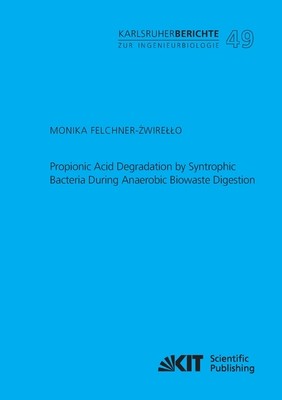
- We will send in 10–14 business days.
- Author: Monika Felchner-Zwirello
- Publisher: Karlsruher Institut für Technologie
- ISBN-10: 3731501597
- ISBN-13: 9783731501596
- Format: 14.8 x 21 x 1 cm, softcover
- Language: English
- SAVE -10% with code: EXTRA
Propionic Acid Degradation by Syntrophic Bacteria During Anaerobic Biowaste Digestion (e-book) (used book) | bookbook.eu
Reviews
Description
Propionic acid is an important intermediate produced during anaerobic degradation of biowaste and a precursor of a large amount of methane. Its accumulation during biomethanation is however a common problem resulting in stagnation phases in biogas production. During this study, the deeper insight into the process of propionic acid degradation was intended by using modern analytical chemistry, standard microbiological approach and molecular biology for describing and explaining the problem.
EXTRA 10 % discount with code: EXTRA
The promotion ends in 20d.07:18:17
The discount code is valid when purchasing from 10 €. Discounts do not stack.
- Author: Monika Felchner-Zwirello
- Publisher: Karlsruher Institut für Technologie
- ISBN-10: 3731501597
- ISBN-13: 9783731501596
- Format: 14.8 x 21 x 1 cm, softcover
- Language: English English
Propionic acid is an important intermediate produced during anaerobic degradation of biowaste and a precursor of a large amount of methane. Its accumulation during biomethanation is however a common problem resulting in stagnation phases in biogas production. During this study, the deeper insight into the process of propionic acid degradation was intended by using modern analytical chemistry, standard microbiological approach and molecular biology for describing and explaining the problem.


Reviews